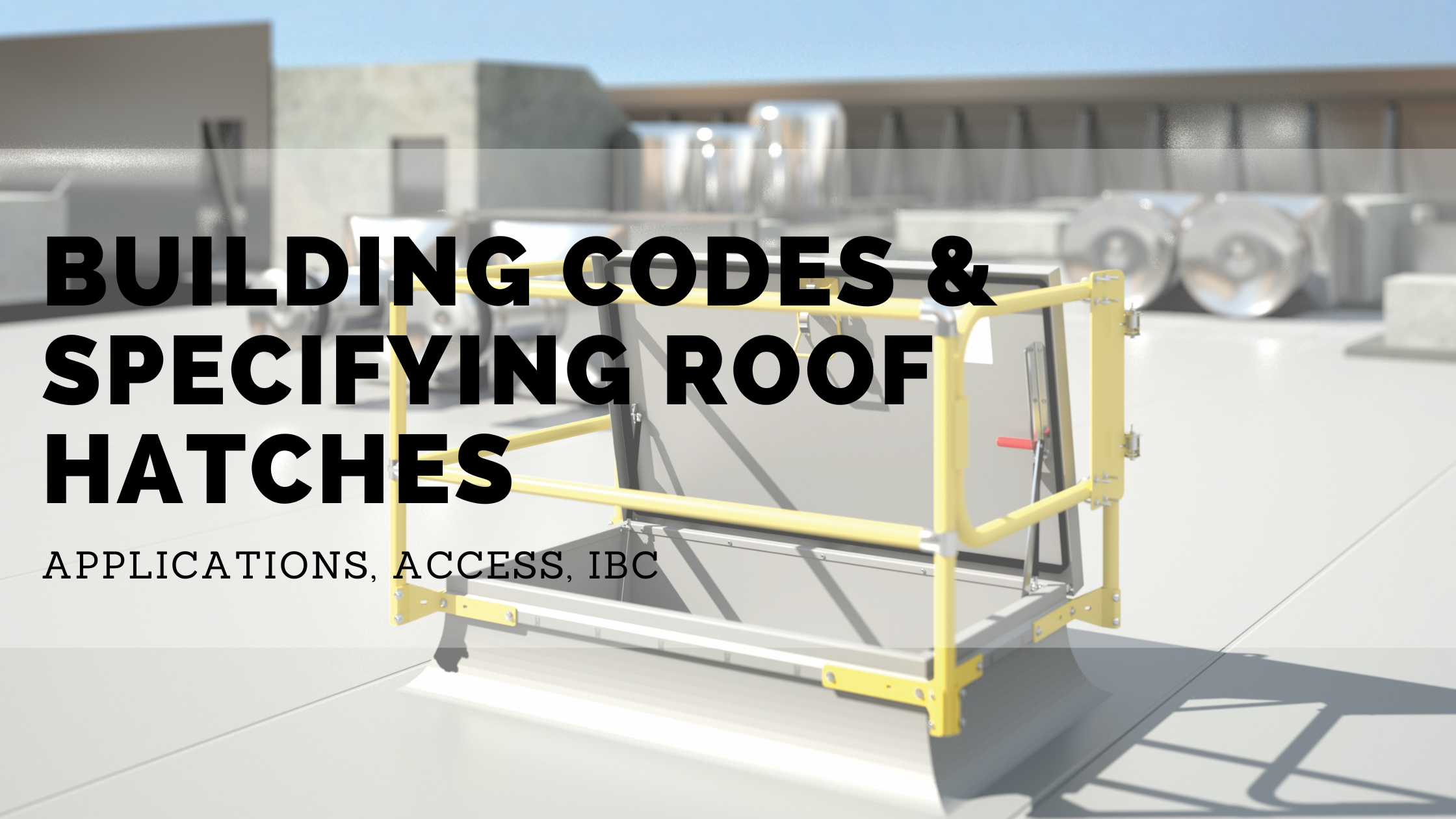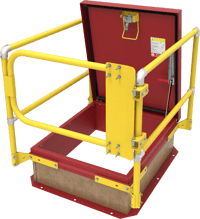Building Codes and Specifying Roof Hatches

Commercial building roof hatch or scuttle products provide safe and convenient access up to roof areas. Understanding roof access hatch styles, applications and codes helps architects, specifiers, contractors, and building owners specify the right product, in the right place, while staying building code and safety compliant.
Roof Hatch Styles & Applications
Typically, a single door roof hatch is utilized for ingress and egress, whereas a double door unit is typically utilized to assist with installation and maintenance of large equipment through the roof.
Common industry roof hatch styles include:
Standard
Roof hatches are designed for personnel access to rooftops. These are available in various thermally rated options and are commonly specified on commercial and industrial buildings.
Daylighting
Hatches provide natural benefits of skylights while providing personnel access. They can be found on hotels, apartments, condos, schools, retail stores, factories, and warehouses.
Security
Hatches are designed with heavier grade materials and detention grade locks to prevent unauthorized access. These units are typically specified in jails, prisons, detention centers, wastewater treatment plants, banks, data centers, and other secure facilities.
Equipment
Hatches are engineered to assist with installation and maintenance of large equipment through the roof. These units are typically specified in manufacturing facilities, processing and wastewater treatment plants.
Access
When it comes to providing safe roof access and egress in a commercial building, roof hatch ladders, ship stairs, alternating tread stairs, and service stairs all have distinct capabilities and functions.
alternating tread stairs, and service stairs all have distinct capabilities and functions.
Ladder
Roof hatch ladders provide convenient, reliable access to roof areas through small openings with a ladder that is typically used over roof hatches or roof scuttles.
Ship Staircases
Provide easier movement of maintenance personnel, tools and equipment. They are staircases with steel flat plates as steps that are used when the roof hatch opening is wider than normal.
Alternating Tread Stairs
Provide easier movement of maintenance, personnel, tools and equipment. Alternating tread stairs fit most roof hatches where space is limited.
Service Stairs
Provide easier movement of maintenance personnel, tools and equipment from a full-size stairway. Service stairs are those that rise from one roof level to another for service personnel and employees.
All of these types of roof access points are vital when for safety and emergency egress from a roof area - it pays to know what type of ladder is best suited for the job.
Building Codes
For personnel egress, Chapter 10 of the 2021 International Building Code (IBC) states:
1011.12 Stairway to Roof
In buildings four or more stores above grade plane, one stairway shall extend to the roof surface unless the roof has a slope steeper than four units vertical in 12 units horizontal (33-percent slope). In buildings without an occupied roof access to the roof from the top story shall be permitted to be by an alternating tread device, a ships ladder or permanent ladder.
See ICC/IBC Code here.
1011.12 Roof Access
Where a stairway is provided to a roof, access to the roof shall be provided through a penthouse complying with Section 1511.2.
Exception: In buildings without an occupied roof, access to the roof shall be permitted to be a roof hatch or trap door not less than 16 square feet (1.5 m2) in area and having a minimum dimension of 2 feet (610 mm).
See ICC/IBC Code here.
1011.13 Guards
 Where the roof hatch opening providing the required access is located within 10 feet (3049 mm) of the roof edge, such roof access or roof edge shall be protected by guards installed in accordance with Section 1015.
Where the roof hatch opening providing the required access is located within 10 feet (3049 mm) of the roof edge, such roof access or roof edge shall be protected by guards installed in accordance with Section 1015.
See ICC/IBC Code here.
Nystrom understands building and accessibility codes for Roof Hatches and Safety Railings. For more information on how we can assist on your next project, please visit our website.




.png)